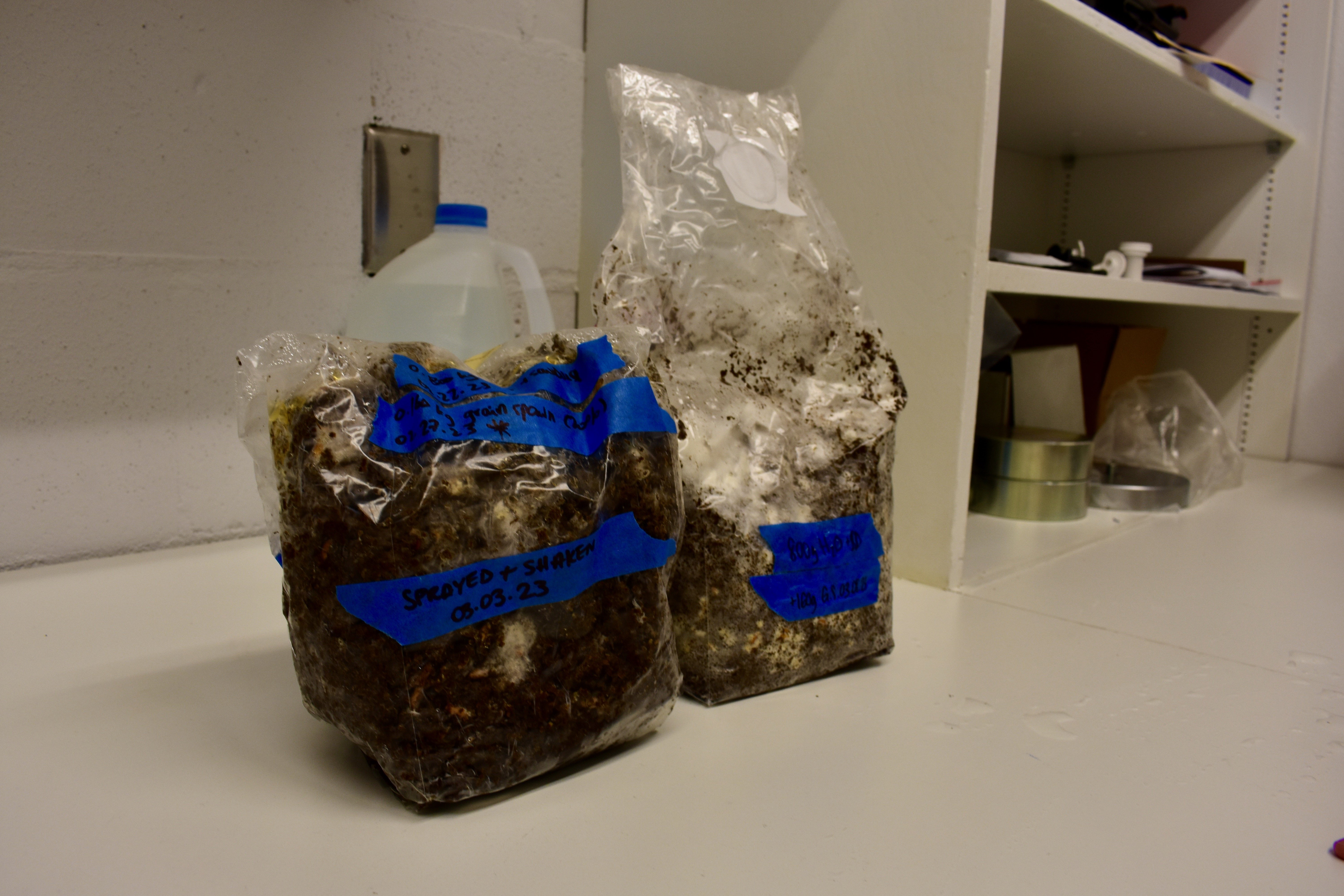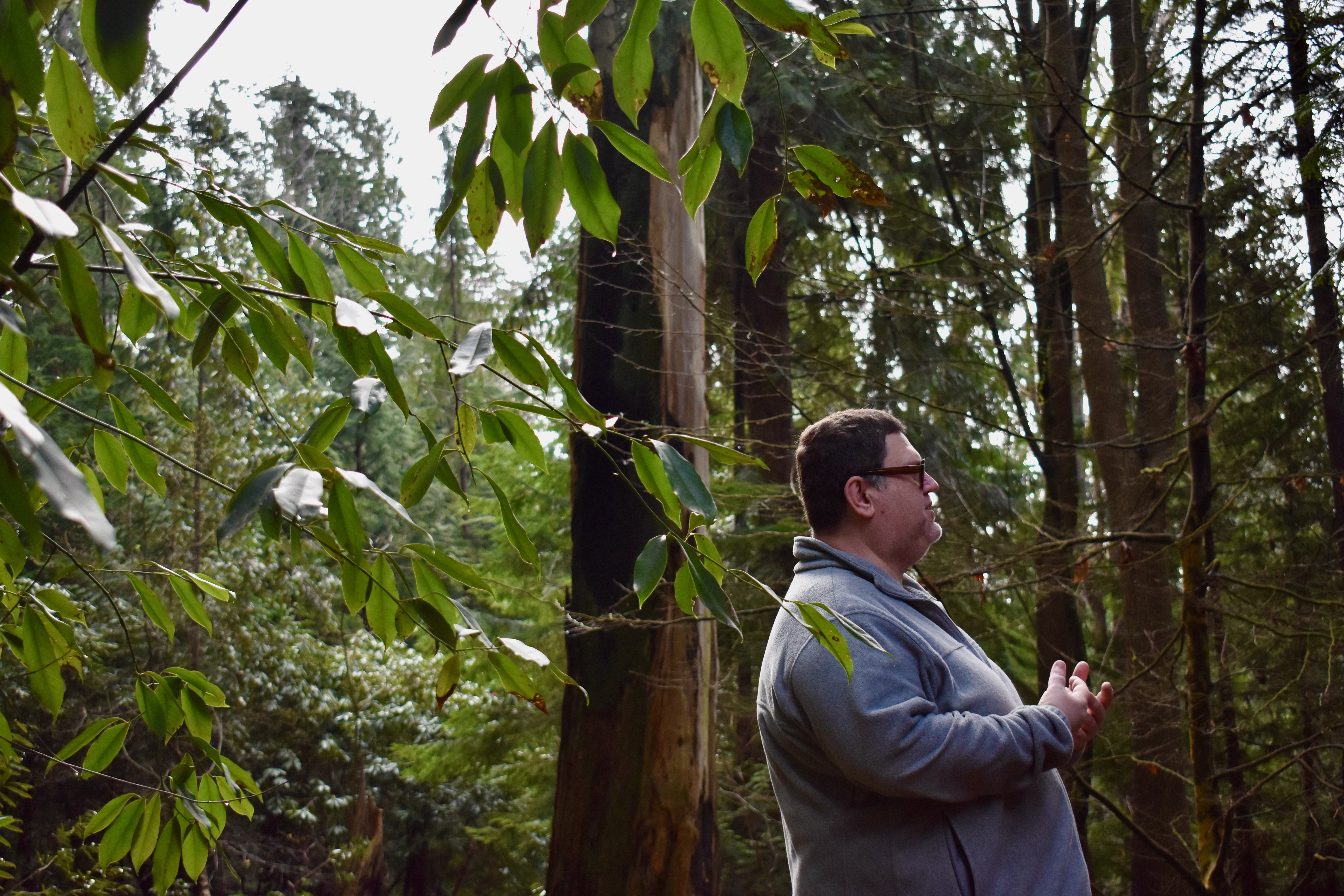
Researchers believe they can use mushrooms to accelerate the work of composting toilets.
Lorena Polovina and Isobel McLean have spent nearly a year tinkering in a tiny basement room at UBC on a novel way to make using the washroom more sustainable. The School of Architecture (SALA) students may not find the place inspiring, but their work has the potential to make a difference in an often-overlooked area of environmental health: waste management.
They’ve been experimenting with mycelium shells — essentially a bucket made of mushroom roots that traps heat and houses bacteria — to accelerate how composting toilets break down waste. Now, thanks to a $50,000 grant from Campus as a Living Lab, they’re ready to test out the project.
The project — nicknamed the MycoToilet — includes Joe Dahmen, an associate SALA professor. He’s already used mushrooms to create sustainable furniture and to create an award-winning toilet. Now, he and the team want to use mushrooms to speed up existing composting toilets.
“We’re targeting about half the time of a typical composting toilet to go from fecal waste to safe, non-pathogenic fertilizer,” said Dahmen. “So it’s basically the same process of any composting toilet, but just radically accelerated.”
“We take some mycelium culture, inoculate rye, and then inoculate the sawdust with the rye,” said Polovina. “The sawdust acts as food for the mycelium to grow on and it expands this little network to basically overtake the sawdust and grow in and around it.”
Once the mycelium has been grown, it is cooked in an autoclave — a device that heats up the sawdust to kill off bacteria that might compete with the mycelium for nutrients. Then, the team will craft the mycelium and sawdust into a bucket shape to fit into the toilet.
Once the insert is shaped, it’s sent to the UBC Department of Microbiology and Immunology, where the team will experiment with different types of heat-loving bacteria to find a combination that will accelerate the decomposition and cleaning of the waste.
“We'll test the different selection of microbes to find and optimize the breakdown of waste so that we make sure that we have the right blend of microbes,” said Dahmen.
Once the team has the right combination of bacteria and enough inserts made from mushrooms, the UBC Botanical Garden will host a test toilet this summer. Daniel Mosquin, UBC Botanical Garden research manager, will coordinate the next phase of the project.
“It’s the whole idea of using biodiversity to inspire solutions that meet fundamental human problems, particularly if it can be done in a low cost, low impact way,” said Mosquin, "And something that doesn't rely on a lot of infrastructure.”
The team designed the MycoToilet for use in areas that don’t have running water for a sewage system. The Government of Canada estimates that 40 per cent of the world’s population doesn’t have access to sufficient clean water.
“We're targeting places that don't have easy access to typical sanitary facilities,” said Dahmen. “If you take the refugee camp example, it's quite common that there's a lot of disease, stemming from pathogens in refugee camps due to inadequate sanitation.”
McLean and Polovina are currently working on creating 100 prototypes of the mushroom insert. The insert design is crucial to help speed up the amount of time it takes for composting toilets to clean and break down human waste.
Once the inserts are complete, they’ll be sent to the Department of Microbiology and Immunology. There, the team will experiment with different combinations of bacteria to see what breaks down waste most efficiently. Then, the mushroom insert’s unique ability to hold heat will help the bacteria get to work processing human waste.
The final product will be the result of a years-long partnership between the UBC SALA, the Department of Microbiology and Immunology, and the Botanical Garden.
“We've been told it's more a mixture of art and science than just pure science, and I would say that's true,” McLean said. “We're kind of at the point now where we understand all the variables that we need to control, so now we can start producing.”
For both McLean and Polovina, the inter-departmental collaboration has been a highlight of the project.
“It's a very interdisciplinary group combining architecture and engineering and sciences together to make something that’s pretty radical in terms of how human waste is being treated right now,” said Polovina. “I come from a more liberal arts background, so it's been pretty amazing to sit in these very interdisciplinary team meetings and learn about all these different perspectives, and [to be a part of] something as cool as growing a toilet!”



